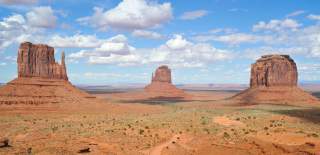One thing that you may not know about the New Forest is that all of the free-roaming ponies, cattle, donkeys, sheep and pigs in the forest are not as wild as you think they are, they all have owners!
But who owns them?! That would be Commoners in the New Forest!
What is commoning?
Commoning is a traditional way of life that dates back to Medieval times (although it was only made ‘official’ in the mid-16th century). Common rights used to be widespread across Britain and Europe, however they have been lost in many areas, meaning the New Forest remains one of the very few areas where commoning is still widely practiced. Historically, there have been 6 commoning rights that are practiced in the New Forest, including the right to graze stock on the open forest.
.gif)
-2.gif)
How do you become a commoner?
Commoners of the New Forest live in and occupy certain properties and land that have the common rights attached to them. Many commoners are actually descents of families who have been communing for many generations, whereby they get the property and land given to them, and the communing rights are then also passed on to them. Many see it is a wonderful privilege to be such a part of the New Forest. Commoners play an essential role in maintaining the New Forest’s landscape and ecology!


What are the 6 commoning rights?
Pasture – The right to graze livestock on the open forest in the New Forest. Livestock includes ponies, donkeys and cattle. This is the main and most important right for commoners. At present, there are over 500 commoners who exercise this right. There are currently more than 8,000 ponies, cattle and donkeys on the forest.
Mast – The right to turn out pigs during pannage season in the New Forest. Pigs play a big part in the livelihood of ponies and cattle during the autumn months, as they snuffle up all of the acorns on the forest floors, which are poisonous to ponies and cattle. This right is most commonly known as ‘pannage’. Pannage Pork is very popular and can be found on many menus in our lovely restaurants.
Fuelwood (Estovers) – The right to cut wood for fuel. This means that those commoners who have access to this right are given free fuelwood from Forestry England once they have cut down trees to protect the ancient woodland across the New Forest. Although this is the right that everybody wants, there are only about 100 properties that have access to this communing right.
Sheep – The right to turn out sheep onto the New Forest. There aren’t a lot of commoners who have this right, and it is rarely exercised in this current day.
Marl – The right to dig for a special type of clay to be used to improve agricultural land. This right is no longer exercised.
Turbary – The right to cut peat for fuel. This right is no longer exercised.


If I live in the New Forest, how do I find out of my land benefits from communing rights?
You’ll need to make a request to the Clerk of the Verderers, so they can carry out a search of the Forest Atlas to see if your property benefits, or not, and if so, which rights you have access to.
.gif)
-2.gif)
Is there anyone else other than commoners who help maintain the New Forest’s wildlife and landscapes?
There is indeed! When you’re in the New Forest you may meet a Keeper! Keepers work for Forestry England and have many different jobs to do to help in looking after the New Forest. These include, keeping an eye on the state of fences, drains and ditches, plus ensuring that the number of deer and other wild animals in the New Forest don’t get out of control. Each Keeper has their own beat, and therefore really gets to know the commoners in their area.
There are also Rangers! Rangers work for The New Forest National Park Authority and are on hand to help those who are out and about in the New Forest. Rangers work to increase the understanding and education of the New Forest’s landscape, culture and wildlife to both visitors and residents.

